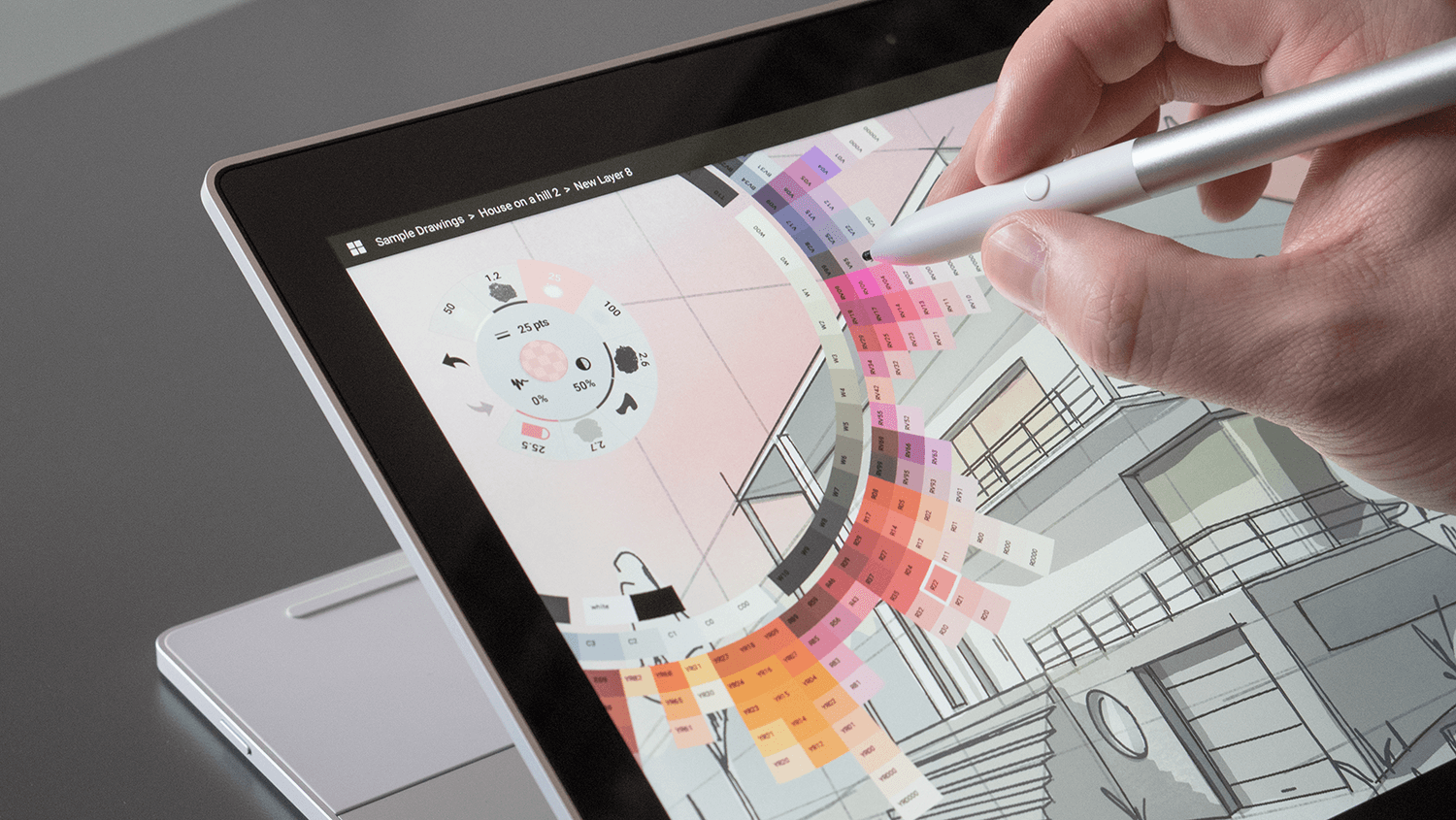![]()
概念是由 TopHatch 小型針織團隊所開發的進階設計平台,結合了傳統素描簿的彈性與數位繪圖工具的速度和靈活性。「概念」是從一開始就使用行動裝置的觸控式介面打造自然介面,讓專業設計師能夠使用美觀卻能靈活調整的工具、彈性環境和可調整的向量。這裡是揮灑創意的遊樂場。TopHatch 的開發人員瞭解 Concepts 的玩家重視的兩件事:回應快速、準確的觸控筆,以及用於激發構想的大型畫布。隨著 Pixelbook Pen 和折疊式智慧型手機等多功能裝置問世,該團隊也因此把握這個絕佳機會,為更多螢幕和各種板型規格打造 Concepts 的使用者體驗。TopHatch 的開發人員參考 Google 的幾個提示和最佳做法,開始著手建構 Concepts 應用程式,在 ChromeOS 和 Android 裝置上提供沉浸式體驗。

具體措施
高效能圖形
該團隊的第一要務,是確保 ChromeOS 可在所有裝置上支援「概念」的清晰設計,以及流暢的效能。「概念」會執行高度最佳化的低階 GPU 程式碼。由於 Android 在市面上有許多不同的裝置,TopHatch 致力於確保每個驅動程式的快速效能。評估 Google 工程師的 ChromeOS 功能之後,TopHatch 發現 OS 的圖像在各種裝置上一致且相容。這表示為了在每個 GPU 驅動程式上提供最大效能,因此建構應用程式比預期簡單得多。最後,團隊最後要推出五種轉譯引擎,因此在建構 Android 7 和 OpenGL ES 3.1 之後,就能讓 Concepts 在約 2,500 部裝置上以美觀的方式運作。建構 ChromeOS 的概念後,TopHatch 進一步針對折疊式裝置調整應用程式。由於 ChromeOS 已完全支援動態螢幕大小調整功能,因此該團隊在半天內就能完成最佳化作業。
支援低延遲觸控筆和鍵盤
「概念」體驗的核心是流暢快速的觸控筆互動。數位設計師會想讓觸控筆從觸控筆流出更多墨水,就像是真正的筆一樣。為此,TopHatch 的下一個目標是盡可能盡可能減少接收觸控輸入到螢幕上顯示筆觸的延遲時間。
TopHatch 知道,在 Android 和 Chrome OS 的所有軟體層中,有可能會造成延遲和「撕裂」的副作用,因為筆劃可能在螢幕畫面上繪製部分或錯誤。團隊透過前端緩衝區轉譯找到瞭解決方案前端緩衝區轉譯支援 Chrome OS 的安全性和簡單性,協助略過繪圖程序中的軟體層,允許複製像素的絕對次數下限。這樣會大幅降低偵測到觸控筆輸入時的延遲可能性,確保 Concepts 盡可能像使用真實筆和紙進行繪圖一樣。TopHatch 也決定為 Concepts 的專案導覽和工具列畫面實作符合直覺的鍵盤支援。如此一來,當設計人員未積極在應用程式中繪製時,設計人員就能更輕鬆地管理、重新命名、查看及共用專案。
成果
設計人員一開始就對 ChromeOS 上的「概念」做出回應,目前相當引人注目。比起其他裝置,一般概念使用者在 Chromebook 上的時間增加 12 倍,在 Google Pixelbook 和 Pixel Slate 上的時間也比其他裝置多 20 倍。TopHatch 也發現 Chromebook 使用者成為付費使用者時,在 Pixelbook 上的比率是其他裝置的兩倍,而 Slate 上的卻是其他裝置的 4 倍。TopHatch 的共同創辦人暨執行長 David Brittain 表示:「為 Chrome OS 建構應用程式後,我們觸及了參與度高的目標對象和大型 Android 市場。」「我們深知針對大型螢幕進行設計,能夠吸引越來越多使用者族群使用,進而獲得寶貴的意見回饋。」TopHatch 致力於支援使用者每月更新一次,最近則推出眾所期盼的圖片匯入功能,方便設計人員草圖並標記自己的相片。該團隊期待能與 ChromeOS 和 Android 平台上的創作者合作,並為各條紋的設計師提供強大且行動裝置的創意生活方式。
立即開始
瞭解如何針對 ChromeOS 最佳化應用程式。

